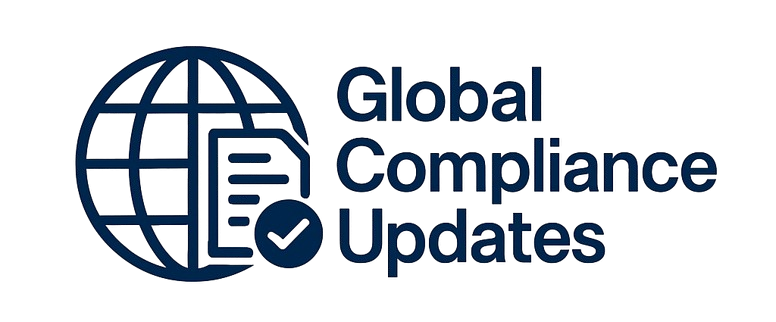Many companies have challenges keeping track of and keeping up with all the workplace laws and regulations that impact companies with more than 20 employees when they are in one state. Think of the challenges when the company has locations in multiple states and even across international locations.
Companies are at risk of several workplace laws that can impact many parts of an organization. Staffing, hiring, compensation, background screening, employee leave management, performance, social media, public sector, termination, and discrimination are just some of the areas that will impact risk management in companies and companies should take this seriously.
WHY SHOULD YOU ATTEND?
Fines and penalties lead the list of compliance concerns in multi-state laws. What works in one state will not work in another. A company without a knowledgeable HR professional or compliance resource can get drowned in all the ways that the multi-state differences can be confusing, time-consuming, multifaceted, and complicated to ensure that an organization complies. Here are other factors that can impact the risk for multi-state organizations. This Webinar will help you identify the many workplace regulations that impact not only state-specific organizations but, will help identify the numerous regulations for multi-state organizations.
AREA COVERED
- What resources can assist organizations in creating strategies to mitigate multi-state challenges
- To identify what state-specific regulations, must comply
- What multi-state regulations do they need to be aware of and what policies do they need to create
- Which multi-state regulations impact Employers more than others
- Which new laws have changed the playing field for Employers to reduce risk
- What policies can be created to mitigate all the new regulations
- Whether to create policies or create an Employee Handbook to mitigate multi-state laws
- What communication strategies need to be developed to ensure effective communication by Employers to employees on the many multi-state regulations
- What tools need to be used to arm Employers with the many resources that will help them mitigate these regulations
- Employee applications
- Criminal Background Screening Regulations
- DOL New Overtime Rule
- Salary Question Prohibited in Hiring
- Paid leave laws
- Pay equity
- Employee wages/minimum wage
- Employee classification
- Drug Testing Guidelines
- Marijuana Legalized in the Workplace
- Immigration compliance
- Employee handbooks
- Reporting
- Retaliation
- Domestic Violence, Sexual Assault, and Stalking Policies
- Independent Contractors vs. employees
- The Equal Employment Opportunity Commission (EEOC) Pay Data Reporting
WHO WILL BENEFIT?
- Federal Contractors
- Department Heads
- Human resources professionals
- Compliance professionals
- Payroll Professionals
- Managers/Supervisors & new and potential managers
- Office Managers responsible for HR responsibilities
- The person responsible for the Affirmative Action Plan (AAP) and Equal Employment Opportunity Commission (EEOC)
Fines and penalties lead the list of compliance concerns in multi-state laws. What works in one state will not work in another. A company without a knowledgeable HR professional or compliance resource can get drowned in all the ways that the multi-state differences can be confusing, time-consuming, multifaceted, and complicated to ensure that an organization complies. Here are other factors that can impact the risk for multi-state organizations. This Webinar will help you identify the many workplace regulations that impact not only state-specific organizations but, will help identify the numerous regulations for multi-state organizations.
- What resources can assist organizations in creating strategies to mitigate multi-state challenges
- To identify what state-specific regulations, must comply
- What multi-state regulations do they need to be aware of and what policies do they need to create
- Which multi-state regulations impact Employers more than others
- Which new laws have changed the playing field for Employers to reduce risk
- What policies can be created to mitigate all the new regulations
- Whether to create policies or create an Employee Handbook to mitigate multi-state laws
- What communication strategies need to be developed to ensure effective communication by Employers to employees on the many multi-state regulations
- What tools need to be used to arm Employers with the many resources that will help them mitigate these regulations
- Employee applications
- Criminal Background Screening Regulations
- DOL New Overtime Rule
- Salary Question Prohibited in Hiring
- Paid leave laws
- Pay equity
- Employee wages/minimum wage
- Employee classification
- Drug Testing Guidelines
- Marijuana Legalized in the Workplace
- Immigration compliance
- Employee handbooks
- Reporting
- Retaliation
- Domestic Violence, Sexual Assault, and Stalking Policies
- Independent Contractors vs. employees
- The Equal Employment Opportunity Commission (EEOC) Pay Data Reporting
- Federal Contractors
- Department Heads
- Human resources professionals
- Compliance professionals
- Payroll Professionals
- Managers/Supervisors & new and potential managers
- Office Managers responsible for HR responsibilities
- The person responsible for the Affirmative Action Plan (AAP) and Equal Employment Opportunity Commission (EEOC)
Speaker Profile
 Margie Faulk
Margie Faulk
Margie Faulk is a senior level human resources professional with over 15 years of HR management and compliance experience. A current Compliance Advisor for HR Compliance Solutions, LLC, Margie, has worked as an HR Compliance advisor for major corporations and small businesses in the small, large, private, public and Non-profit sectors. Margie has provided small to large businesses with risk management strategies that protect companies and reduces potential workplace fines and penalties from violation of employment regulations. Margie is bilingual (Spanish) fluent and Bi-cultural.Margie’s area of expertise includes Criminal Background Screening Policies and auditing, I-9 document correction and storage compliance, …
Upcoming Webinars

ChatGPT and Project Management: Leveraging AI for Project M…

Workplace Investigations 101: How to Conduct your Investiga…

Project Management for administrative professionals

The Monte Carlo Simulations in Excel for Risky Investments

Onboarding is NOT Orientation - How to Improve the New Empl…

Dealing With Difficult People: At Work & In Life

Transform Data into Insights: A Beginners Guide to Excel Pi…

Construction Lending And Real Credit Administration: Evalua…

Understanding Accounting for non - Accounting professionals

Harassment, Bullying, Gossip, Confrontational and Disruptiv…

New Form 1099 Reporting Requirements: 2025 Compliance Update

Human Error Reduction Techniques for Floor Supervisors

HR Metrics and Analytics 2025 - Update on Strategic Plannin…

Treating Employees Like Adults: Discipline versus Empowerme…

7 Ways To Beat Burnout: Without Quitting Your Job


How to Write Procedures to Avoid Human Errors

Handbook Overhaul 2026: Compliance, OBBB Act & Beyond

FDA Proposes Framework to Advance Credibility of AI Models

Ethical Terminations: Navigating Employee Exits with Legal …

Understanding EBITDA – Definition, Formula & Calculation

Project Management for Non-Project Managers - Scheduling yo…

4-Hour Virtual Seminar on Hidden Secrets of Selling & Marke…

Validation Statistics for Non-Statisticians

Data Integrity and Privacy: Compliance with 21 CFR Part 11,…


The Alphabet Soup: When the FMLA, ADA, COBRA, and Workers' …

Talent Management: How to Leverage AI and ChatGPT Tools for…


Offboarding with Care: Conducting Legal & Ethical Employee …

2-Hour Virtual Seminar on How to Conduct an Internal Harass…

Payments Fraud Detect & Prevent Check, ACH and P-Card Schem…

Managing Toxic & Other Employees Who have Attitude Issues



Reduce Stress in the Workplace: Effective Ways to Handle Co…





Excel - Pivot Tables - The Key To Modern Data Analysis and …
